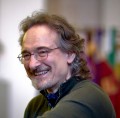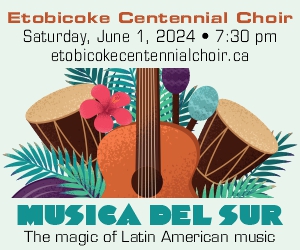He's been called “probably the most uncompromising musician in Canadian musical history” by Robert Aitken, director of New Music Concerts. Udo Kasemets’ compositions have made an indelible and enduring contribution to the Canadian modernist and postmodernist music landscape. Through his concert activism he also introduced the music of the American and European avant garde to the Toronto public.
In fact, Kasemets’ career encompasses the story of the avant garde of the second half of the 20th century in our town. It is fitting that now in his 90th year, New Music Concerts is celebrating that contribution.
Born in Tallinn, Estonia in 1919, Kasemets immigrated to Southern Ontario in 1951. He has played a key role as a Canadian contemporary music agent provocateur ever since. An accomplished conductor, pianist, teacher, lecturer, journalist and writer, he is today best known as a composer of uncompromising modernist works.
Having fully digested the dodecaphonic composing system of the iconic 20th-century composer Arnold Schoenberg, during the latter 1950s Kasemets absorbed the influences of modernist giants like Erik Satie, Marcel Duchamp, James Joyce, and especially John Cage; and his composer colleagues such as Morton Feldman, dancer choreographer Merce Cunningham and architect-seer Buckminster Fuller. Around 1960 Kasemets began introduce compositional concepts gleaned from these and other artists, mathematicians and scientists. These innovations included open form, graphic and verbal notation, audio-visual interactions, mixed media and electroacoustic music; all of which began to appear in his work.
At a time before regular presenters of new music existed, when such music was considered by most audiences an experimental activity, Kasemets put these ideas (and his passion for the music of its practitioners) into action. He organized Toronto's first new music and multi-media concert series. The first was called Men, Minds and Music in 1962, after which he established the Mixed Media Concerts at the Av Isaacs Gallery. Later in the decade he planned and directed the first Toronto “Festival of Arts and Technology” entitled SightSoundSystems. Through these and other concerts Kasemets was among the first to programme the music of modernist masters like Luciano Berio, John Cage, Morton Feldman, Earle Brown, Gordon Mumma, Robert Ashley, and Roger Reynolds in Toronto. Kasemets helped put his adopted town on the international avant-garde tour map.
Not content with organizing concerts, Kasemets founded and edited a new music publication series Canavangard while traveling, performing (on his instrument, the piano), and lecturing in Canada and the United States. Kasemets was also active for decades as an arts educator. He joined the Faculty of the Department of Experimental Art at the Ontario College of Art (OCA, pre-OCAD), where he taught from 1971 until his retirement in 1987. He introduced a generation of OCA artists to contemporary concert music. For a period he was instrumental in making OCA and the AGO next door a haven for new music and performance art. In addition to Kasemets and his colleagues, I recall appearances by John Cage, Jon Hassell and Laurie Anderson there in the 1970s.
Always true to his and artistic mentors’ ideals, Kasemets organized the memorable celebrations of John Cage's 65th and 75th birthdays, as well as Marcel Duchamp's centennial. I participated in the memorable Cage memorial concert held at Harbourfront, spearheaded by Kasemets and colleagues. More recently, Kasemets wrote a long series of probing articles in Musicworks magazine. Throughout it all, he has kept on composing, right through his 90th year.




